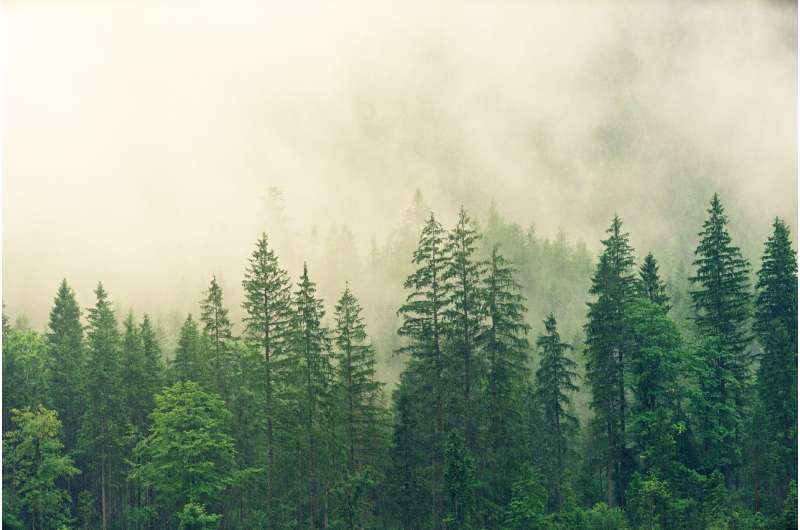Researchers discover novel molecular mechanism that enables conifers to adapt to winter

In boreal forest during late winter, freezing temperatures are typical but at the same time the sun can already shine very brightly. This combination is especially dangerous to evergreen plants, such as conifers. The chlorophyll pigment-proteins in their needles absorbs light, but the enzyme activity, stopped by the cold, prevents the plants from using the light for photosynthesis. This exposes the cells to damage.
Dissipating the excess light energy as heat, the so-called non-photochemical quenching, is a common, fast, and dynamic but intermittent regulation mechanism in all plants and algae, and it is employed to protect the plant from damage caused by high light intensity. However, the combination of freezing temperatures and high light intensity results in a particular form of quenching in conifers: sustained non-photochemical quenching.
Researchers from the University of Turku, Finland, discovered an essential part of the mechanism associated to sustained non-photochemical quenching in conifers. The discovery is significant as the mechanism in question is still poorly understood in science.
"We collected needle samples from nature for four years and studied spruce branches in simulated conditions mimicking late winter. On the basis of biophysical and molecular biology analyses, we could show that the triply phosphorylated LHCB1 isoform and phospho-PSBS protein in chloroplast appear to be prerequisites for the development of sustained non-photochemical quenching that safely dissipates absorbed light energy as heat," say Doctoral Candidate Steffen Grebe and Postdoctoral Researcher Andrea Trotta from the Molecular Plant Biology unit of the Department of Biochemistry at the University of Turku.
In the phosphorylation of a protein, a phosphoryl group is added to certain amino acids, which is a common mechanism for protein regulation in cells. The phosphorylation of the proteins discovered in spruce has not been described in science before.
The researchers believe that together with the limited photoinhibition of photosystem II, the phosphorylations lead to structural changes in pigment-proteins so that the needles can effectively dissipate the excess light energy.
Spruce genome sequencing enabled novel research
The regulation mechanisms of photosynthesis have been previously studied on a molecular level mainly on fast-growing species regularly used in plant biology, such as thale cress (Arabidopsis thaliana) and the alga Chlamydomonas reinhardtii. However, it is not possible to study the winter acclimatization with these plants and easily transfer the knowledge to conifer species. The molecular biology research of conifers became possible after the spruce genome sequencing was published in 2013.
"The spruce genome is approximately ten times larger than that of humans. The genome sequencing of spruce led by our long-time partner, Professor Stefan Jansson from the Umeå University, enabled the molecular photosynthesis study we have now conducted in Turku, says Principal Investigator," Academician Eva-Mari Aro.
The new information on spruces' adaptation to their environment can be used in assessing the impact of climate change on photosynthesis of conifers and their carbon sink capacity as photosynthesis in conifer forests is one of the most important carbon sinks on a global scale.
More information: Steffen Grebe et al, Specific thylakoid protein phosphorylations are prerequisites for overwintering of Norway spruce (Picea abies) photosynthesis, Proceedings of the National Academy of Sciences (2020). DOI: 10.1073/pnas.2004165117
Journal information: Proceedings of the National Academy of Sciences
Provided by University of Turku


















